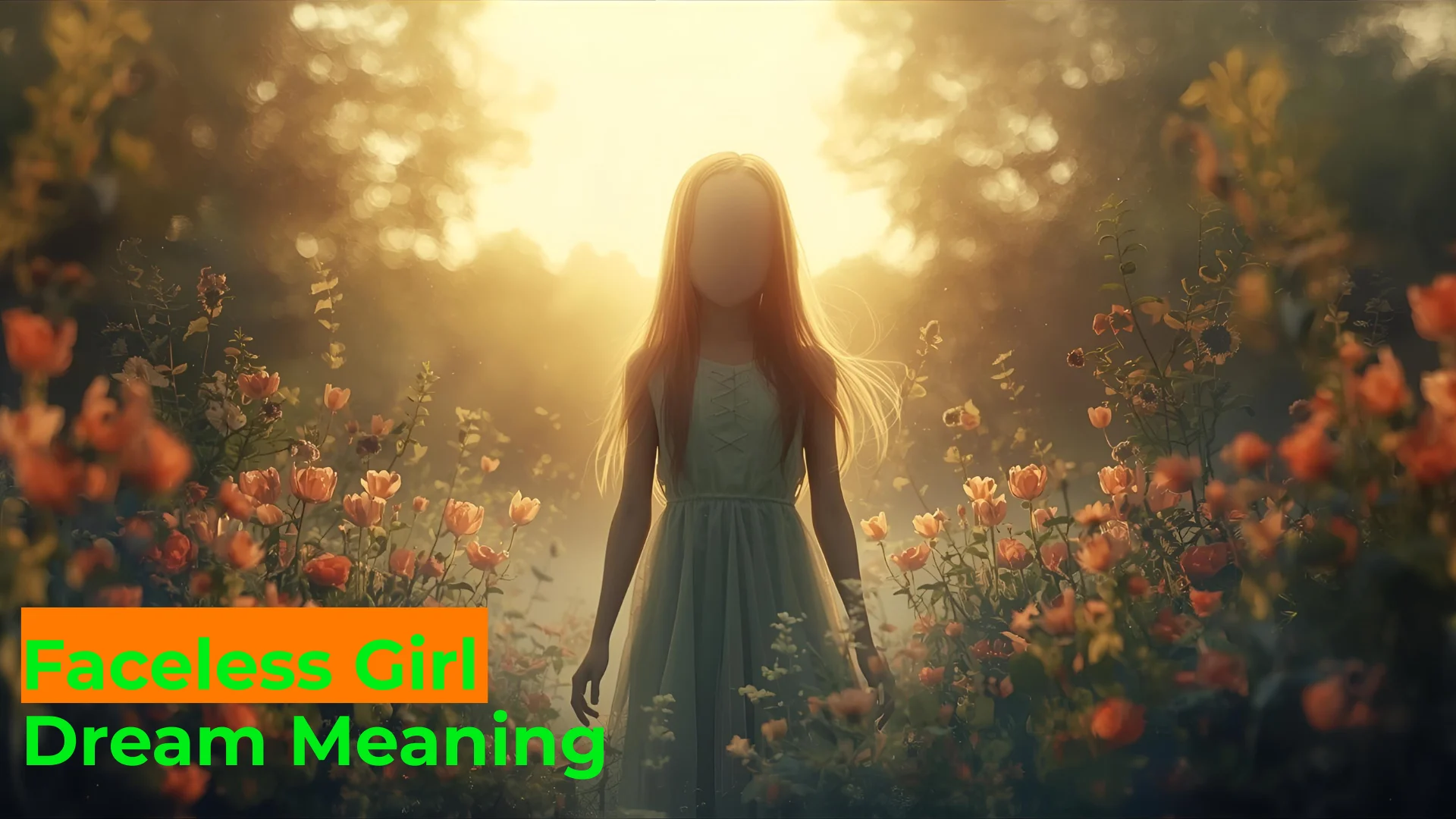The dream always ends the same way. You’re standing in a sun-drenched field, or perhaps a crowded, silent street. A figure approaches—a woman, her posture speaking of a quiet grace, her hair flowing in an unseen breeze. But as she draws nearer, a cold wave of recognition washes over you. Where her face should be, there is only a smooth, featureless canvas. No eyes to meet yours, no mouth to speak. You jolt awake, your heart pounding, the image of the faceless girl burned into your mind. Is it a premonition? A forgotten memory? Or something far more profound?
This haunting visage has transcended the realm of dreams, becoming a powerful symbol in modern art, literature, and especially body art. More than just a trendy tattoo, the faceless girl is a vessel—an empty page upon which we project our deepest fears, our hidden strengths, and our most profound questions about identity. She is everyone and no one. She is the past we can’t remember and the future we can’t see. She is, ultimately, a mirror. This article delves into the rich tapestry of meanings behind this enigmatic symbol, exploring its psychological roots, spiritual significance, and the powerful stories it tells on skin and in soul.
A Shadow in History: The Anthropological Roots of the Faceless Figure 🏺
The depiction of faceless or featureless figures is not a modern invention. It is a thread woven through the fabric of human history, appearing in various cultures with distinct meanings.
- Ancient Anonymity: In many ancient artifacts, from Cycladic figurines of Greece (2700–2300 BC) to certain Egyptian statuettes, faces were simplified or omitted. This was often less about mystery and more about universality. These figures represented concepts—fertility, mourning, devotion—rather than specific individuals. They were everywoman, a symbolic stand-in for a collective idea.
- Cultural and Spiritual Significance: In Japanese art, particularly in Ukiyo-e woodblock prints, features were sometimes subtly suggested rather than explicitly detailed, emphasizing emotion through posture and setting rather than expression. This aligns with aesthetic principles like Yūgen ( profound grace and subtlety) and encourages the viewer to project their own feelings onto the work.
- The Veiled and the Sacred: Across many religions, veiling the face can signify humility before the divine, the transition between states of being, or the protection of something sacred. While not “faceless,” the effect creates a similar ambiguity, separating the individual’s personal identity and allowing them to represent a larger spiritual principle.
The modern “faceless girl” draws from this deep well of history. She is a continuation of the ancient human practice of using anonymity to express universal truths.
The Psyche’s Mirror: Psychological & Healing Interpretations 🧠
Why does this image resonate so powerfully with our subconscious? Modern psychology, particularly the work of Carl Jung, provides a compelling framework.
Jungian Archetypes: The Anima and The Shadow
Carl Jung might interpret the faceless girl as a blend of two key archetypes:
- The Anima: The feminine aspect present in the unconscious of men. She represents intuition, emotion, and the erotic. A faceless anima could suggest an undeveloped or unknown relationship with these qualities. She is a call to explore and integrate this hidden part of the self.
- The Shadow: The unknown, repressed parts of our personality. A featureless face can symbolize the parts of ourselves we hide from the world—and even from ourselves. Confronting this figure in a dream can be the first step toward acknowledging and integrating our shadow, leading to greater wholeness.
Modern Therapeutic Perspectives
For many, the symbol emerges during periods of:
- Identity Crisis: The faceless girl can embody the feeling of being lost, of not knowing “who you are.” She represents the anxiety that comes with major life transitions—a career change, the end of a relationship, a move.
- Dissociation & Trauma: In cases of trauma, individuals can feel detached from themselves, as if they are watching their own life from the outside. The faceless figure is a powerful externalization of this internal numbness, a lack of connection to one’s own identity and emotions.
- The Healing Journey: Conversely, in a healing context, embracing the faceless girl can be an act of reclaiming. It can mean: “My identity is not fixed. I am not defined by my past, my pain, or the expectations of others. I have the power to become who I choose to be.” The blank slate is not empty, but full of potential.
Whispers from the Soul: Spiritual & Religious Perspectives ✨
Beyond psychology, the faceless girl holds deep spiritual meaning across various belief systems.
- Native American Traditions: Many Indigenous cultures hold deep reverence for ancestors and spirit guides who may appear in visions or dreams. While specific interpretations are diverse and sacred, a figure without distinct features could be seen as a non-specific spirit messenger, an ancestor whose individual identity is less important than the message they bring. It’s crucial to approach this with extreme sensitivity (a point we’ll return to later).
- Eastern Philosophies (Buddhism & Hinduism): These traditions often explore the concept of Maya (illusion)—the idea that the material world and our egoic identity are not ultimate reality. A faceless figure could symbolize the transcendence of the ego, the shedding of personal identity to connect with the universal, formless consciousness (Brahman/Emptiness).
- Modern Spirituality & Mysticism: In contemporary practice, the symbol is often seen as a representation of the divine feminine in her mysterious, unknowable aspect—like the dark moon. She is the goddess who exists before and beyond name and form. She represents intuition, the subconscious, and the creative void from which all things are born.
Deeper Symbolism: Strength, Resilience, and Inner Healing 💪
When people choose to permanently ink this symbol onto their skin, they are often tapping into a well of powerful, positive meanings.
- Strength in Anonymity: She represents a strength that requires no external validation. Her power comes from within, not from the approval she reads on others’ faces.
- Resilience and Protection: The lack of features can be seen as a shield. It symbolizes the ability to protect one’s inner self from the judgment and projections of the outside world. She has endured and cannot be easily read or wounded.
- Focus on Essence Over Appearance: In a world obsessed with image and facade, the faceless girl is a radical statement. She declares that true identity is not about facial features, but about character, spirit, and action.
- The Journey Inward: She is a permanent reminder to look inward for answers, to trust one’s intuition, and to value the inner world over external noise.
A Canvas of Meaning: Design & Color Symbolism 🎨
The specific design elements of a faceless girl image add layers of personal meaning.
| Design Element | Potential Meanings & Symbolism |
| Flowers (Roses) | Love, passion, beauty, but also thorns (protection, pain). |
| Floral Crown/Wreath | Victory, celebration, connection to nature, divinity. |
| Birds (In Flight) | Freedom, liberation, perspective, a message from the spirit world. |
| Ravens/Crows | Mystery, magic, transformation, the underworld. |
| Moths | Attraction to light, intuition, transformation, vulnerability. |
| Tears | Grief, release, healing, deep emotion. |
| Head Wrap/Scarf | Grace, mystery, cultural identity, protection. |
| Long, Flowing Hair | Freedom, sensuality, wildness, natural spirit. |
| Blue Hues | Peace, tranquility, sadness, depth, wisdom. |
| Red Hues | Passion, anger, love, vitality, blood, life force. |
| Black & Grey | Elegance, mourning, strength, neutrality, timelessness. |
| Gold Accents | Divine energy, wealth (spiritual or material), illumination. |
Body as a Temple: Placement & Location Meanings ⛪
Where the symbol is placed on the body can profoundly influence its interpretation.
- Chest/Over the Heart: Close to the core of emotion. Represents love, grief, cherished memories, or protecting one’s emotional world.
- Back (Shoulder Blades): Carrying something, protection from behind (having your back), something from your past you are moving away from but still carry.
- Thigh: A very personal and intimate placement. Often linked to femininity, sensuality, creativity, and strength that is rooted and powerful.
- Forearm/Wrist: A constant, visible reminder. Represents a lesson, a value, or a story the wearer wants to see and remember daily. Often related to action and expression.
- Rib Cage: Close to the breath and the heart. Symbolizes something deeply personal, a hidden strength, or a private pain. It’s a secret kept just for the wearer and those they choose to show.
- Neck: A bold statement of identity. Represents a willingness to be seen, to voice one’s truth, and to wear one’s heart on their sleeve (or neck).
A Necessary Conversation: Cultural Debate & Sensitivity 🌍
As the faceless girl motif—often depicted with braids, headdresses, and feathers—has proliferated, it has sparked an important debate about cultural appropriation versus appreciation.
- The Issue: Many popular “faceless girl” designs directly draw from and commercialize the artistic and spiritual traditions of Indigenous peoples, particularly Native American and First Nations cultures. These images are not generic; they are often specific to sacred traditions and carry deep cultural significance.
- Respect vs. Appropriation: Appropriation occurs when a dominant culture takes elements from a marginalized culture without permission, often stripping them of their original meaning and context for aesthetic purposes. This can cause deep harm, perpetuating stereotypes and eroding the cultural significance of these symbols.
- How to Approach with Respect: If you are drawn to this imagery, it is vital to:
- Educate Yourself: Research the specific cultural origins of the design elements you’re considering.
- Support Indigenous Artists: Commission work from artists belonging to that culture.
- Ask Yourself Why: Are you honoring the culture, or just borrowing a “cool” aesthetic? Intention matters.
- Consider Alternatives: Explore other ways to represent mystery and strength that are more personal to your own heritage or experience.
Stories in Ink: Real-Life Examples 💌
- Elena’s Story of Grief: Elena got a faceless girl tattoo on her rib cage after losing her mother. The girl has her head bowed, with a single tear and a small hummingbird (her mother’s favorite bird). For Elena, the lack of a face represents the fading memory of her mother’s exact features, but the tattoo embodies her mother’s eternal spirit and her own private grief.
- Mark’s Journey of Integration: Mark, after a period of burnout and feeling like he was just playing a role at work, dreamed of a faceless woman in a field. In therapy, he came to see her as his repressed intuitive and creative side (his Anima). He got a simple linework tattoo of the figure on his forearm as a reminder to nurture that part of himself.
- Sofia’s Symbol of Resilience: Sofia survived an abusive relationship where she felt her identity was systematically erased. Her tattoo, on her thigh, is of a faceless girl with a strong, upright posture, a floral crown, and vines growing around her feet. It symbolizes her reclaiming of self. She says, “She is faceless because I get to decide who she is now. And she is strong.”
Frequently Asked Questions (FAQs) ❓
Q1: I dreamt of a faceless person. Does it always mean the same thing?
A: Not necessarily. While this article focuses on the feminine figure, a faceless person can represent anonymity, a fear of the unknown, or an aspect of yourself you’re ignoring. Consider the figure’s energy and the dream’s context.
Q2: Is it bad luck or a bad omen to dream of a faceless girl?
A: Rarely. Most psychological and spiritual interpretations view it as a neutral or even positive symbol. It’s typically a call to self-reflection rather than a warning of impending doom.
Q3: Is it cultural appropriation to get a faceless girl tattoo?
A: It can be, depending on the design. Designs that directly copy Indigenous styles, headdresses, or specific cultural attire without understanding their significance are appropriative. Opting for a more neutral or personally symbolic design is a respectful alternative.
Q4: What should I do if this dream disturbs me?
A: Journal about it. What did the figure feel like? Menacing? Sad? Peaceful? Try sketching her or writing her a letter. If the dream is recurrent and troubling, speaking with a therapist can be very helpful.
Q5: Can men have this tattoo or dream symbol?
A: Absolutely. For men, it can powerfully represent the integration of the Anima (the inner feminine) as discussed in Jungian psychology, or simply a connection to universal themes of mystery and inner self.
Conclusion: The Woman of a Thousand Faces
The faceless girl is a paradox. She is no one, and in being no one, she has the potential to be everyone. She is not a symbol of emptiness, but of profound potential. She invites us to look beyond the superficial, to question the very nature of identity, and to find strength in the mystery within ourselves.
Whether she arrives in the quiet of a dream or is chosen as a permanent mark of resilience, she asks the same question: Who are you, when no one is looking? Who are you, beneath the mask you show the world? She does not answer. She simply holds the space for you to discover it for yourself


